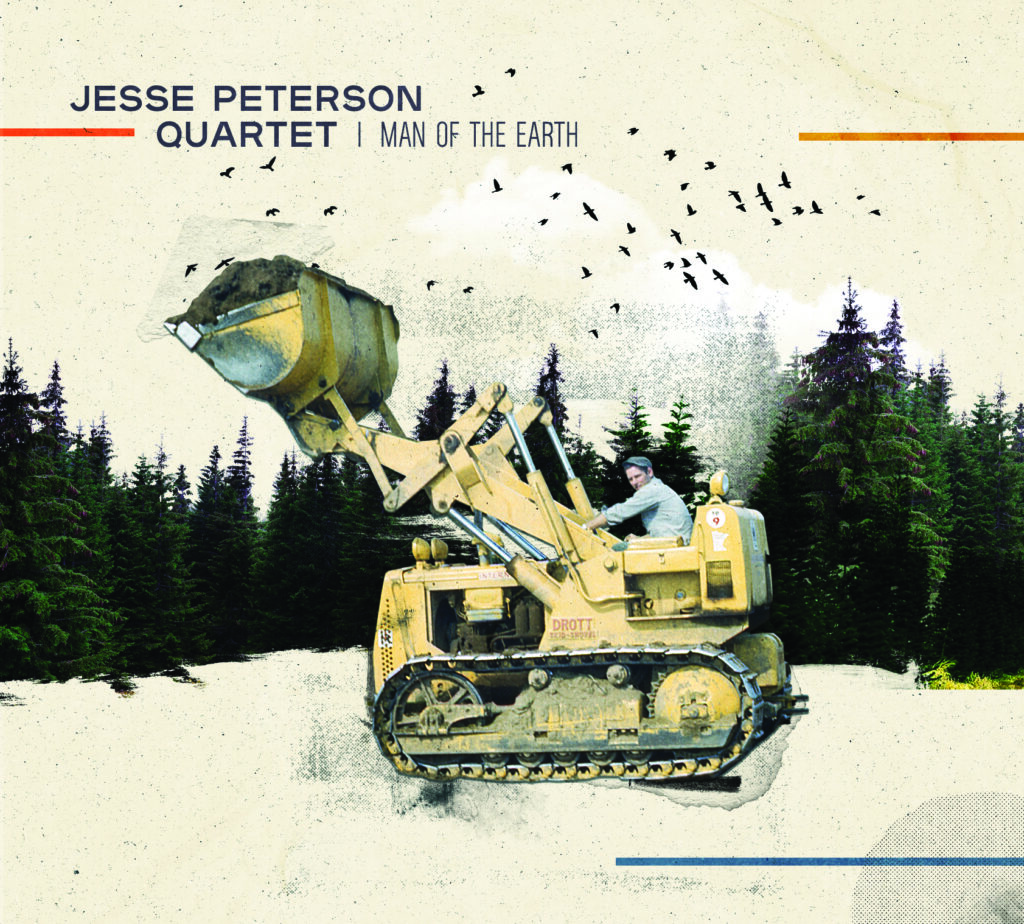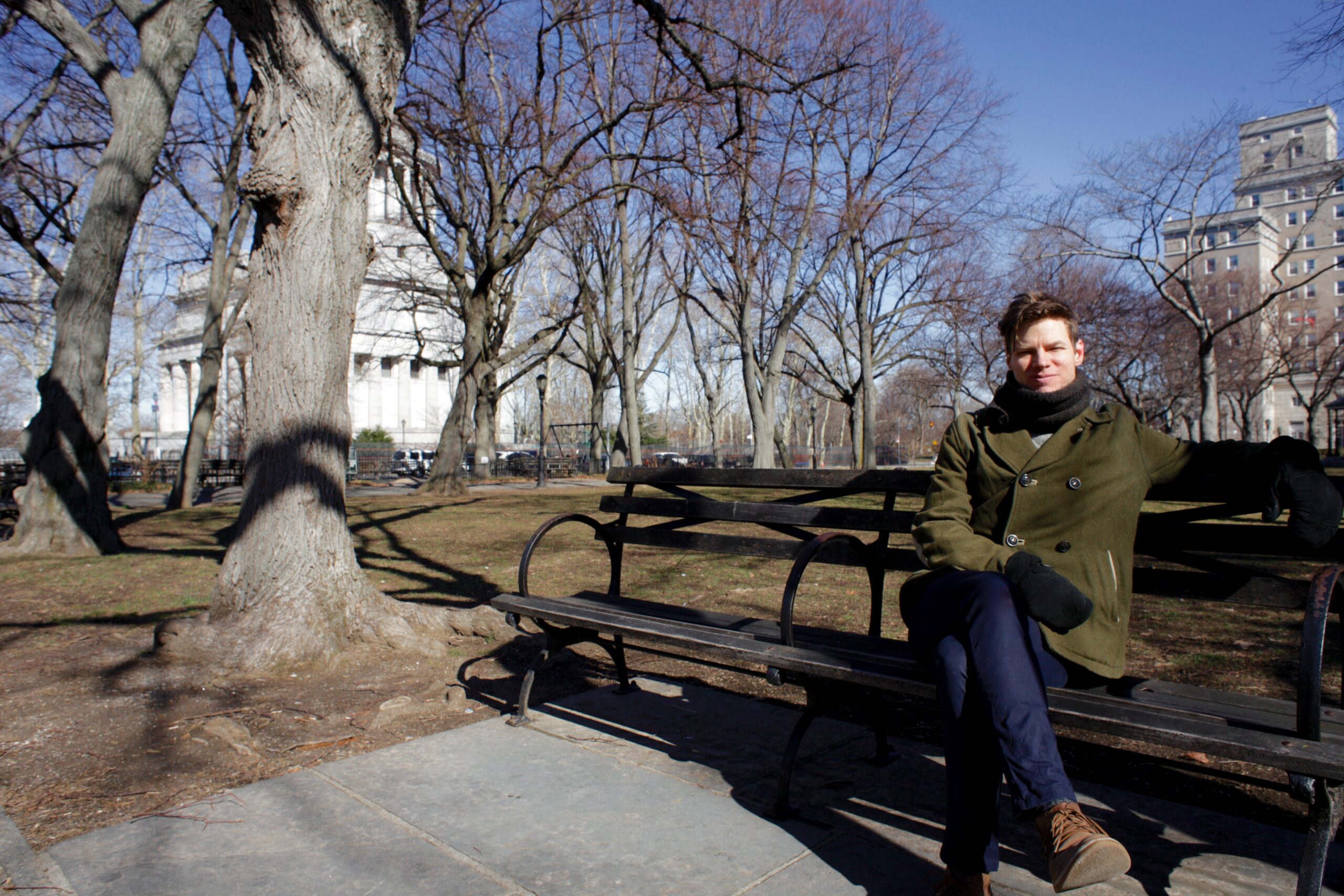Jesse Peterson is a drummer, composer, and educator. Hailing originally from the northern woods of Minnesota, Peterson earned his bachelor’s degree in music from the University of Minnesota. During his time in Minneapolis, Peterson studied extensively with internationally renowned jazz drummer Dave King (Bad Plus, Happy Apple) as well as Phil Hey (Twin Cities jazz), Fernando Meza (Minnesota Orchestra, University of Minnesota), Bob Adney (MacPhail Center for Music) and Judith Zaimont (University of Minnesota). In Minneapolis, he formed and co-led two jazz trios that performed his compositions at venues such as the Artists’ Quarter, the Icehouse, and the Uptown Bar. Peterson later moved to New York City where he formed the Jesse Peterson Quartet, which performed at staple NYC music venues such as Rockwood Music Hall, Pianos, and Vivaldi Cafe. Peterson released the quartet’s debut album, Man of the Earth, on the Chicago-based jazz record label Ears & Eyes Music in 2018. Since August 2022, Peterson is based in Portland, where he will maintain a private studio of students in drums, composition / music theory, and audio production. With a full home studio setup, he is at work on a second album and able to provide recorded drums and audio production via in-person or remote sessions.
Jesse Peterson Quartet – Man of the Earth
Debut release on ears & eyes records!
Stream on Spotify or purchase on Bandcamp
Drum lessons available!
I am currently taking students, both online and in-person at my studio.
With two decades of teaching experience, I am able to teach all ages in all music styles. My teaching is effective at helping students achieve their goals.
For rates and more information please email me at jpeter34[at]gmail.com.

Jesse Peterson Quartet – Man of the Earth
Debut release on ears & eyes records!
https://jessepetersonquartet.bandcamp.com/album/man-of-the-earth

In its debut album, Man of the Earth, the Jesse Peterson Quartet springs into jazz, pounces on it. Drums, bass, sax, and piano arrive fully conscious from the first minute, ready to tussle and muse through these eight evocative compositions by Jesse Peterson. The performances are energetic and smart, and the recordings capture a group of musicians caught up in the euphoria of invention, precision, and play. Peterson’s unique brand of midwestern-grown melodic indie jazz does not tread with a light, sophisticate’s step. Despite their subtlety and wit, these songs feel sturdy, hearty, corn-fed. This jazz leaves tracks in the mud.
The title track, “Man of the Earth,” shows off a tonal and rhythmic diversity that characterizes the album. Raw pentatonic patterns provide a foundation for a colorful, complex melody that ascends and swirls above. An easy swing parries with driving subdivisions. Restraint and subtlety give way to kinetic crashes and splashes. Amid all this movement, the band shifts confidently, unified in improvisational freedom and in written lines.
The name of the album and title track refer to Peterson’s father, whose capacity for earnest work and play inspired some of the songs and shaped his son’s approach to music.He owned and operated a trucking and landscaping company for most of his life, and left an imprint that can be felt in the hulking joie de vivre of these songs. This rootedness in earth and family tethers the complexity and experimentation of the album to something narrative, grounded.
Peterson, as a composer and drummer, takes us places. He puts on jazz as a lens and sees America. These songs describe the America he grew up in, rural Minnesota, a realm of space, humble earthbound hymns and motor oil. They also show us his home in New York City, a brusque, impatient world, clogged with humans and clamoring with ambition. Throughout the album, these two locales sometimes appear with distinction, clarity, but at other times they meet, they comment on each other, they clash and step on each other’s toes.
Songs like “Hibbing BMX Life Experience” and “Bucko is Relocating” also show Peterson’s range of musical influence. He doesn’t shy away from the fun of up-tempo rock, brassy Broadway grandeur, or the gleeful quarter-note drive of mashing keys. These pronounced styles become the object of the band’s commentary, as the players alternately lose themselves in the spirit of each moment, and then turn the themes into opportunities for variation, deconstruction.
Thus Man of the Earth becomes a series of arrivals and departures, at times landing in a place of familiarity, nostalgia, and warmth, only to lift off in the next moment, soaring into abstraction. “The Factors” begins with a minimalist cycle of bass and drums. Sax and piano sing along, sometimes gracing the established key, at other times resisting, pulling up into an airy bitonality. This opening gives way to a second movement, a rousing Afro-Cuban groove with a cascading melody floating over it. In this section, the sax shifts in and out of structured melody, accenting the formal strength of the song with bursts of improvisation. The song grows and matures and leaves home, but finds its way back in the end. Conceptually and musically, Peterson follows this cycle throughout the album, a cycle that loops and spirals and soars, yet always begins and ends in the same elements, the same clay.
The album displays the quartet’s stellar musicianship in “Have a Winnebago Winter,” which opens with a shimmering riot of drums. Listeners can delight in Peterson’s technical command of the set, noting the rapid, confident interplay of patterns, tempi, and traditions. But he employs his craft with purpose. Peterson positions his drumming in different roles throughout the album, sometimes playing the rowdy and talkative star, sometimes a supportive role, but in every instance, Peterson’s mind, heart, and hands work together to turn the set into a voice, an expressive tool. A minute into “Winnebago Winter,” the bass steps in from the drum break with a sly, probing line, the piano tumbles in from on high, lands on the bass line to parallel it, fatten it. As soon as the group settles into a groove, Peterson enlivens it, finding rhythmic pockets that are somehow mathematical and soulful, making for a sound that is at once versatile and coherent. This quartet maneuvers boldly, decisively, bringing character to each articulate song.
Peterson writes and plays with feeling. These melody-driven songs each speak of something human. “Fer da Kids” gives us a grown-up looking back at the pure frivolity of childhood, a rousing revisitation tinged with longing. “You Remember Mort” delivers a poignant eulogy, a gray interior, and a progression that paces back and forth between solace and tension. And in “Blessing in Between,” a wistful passage sets the stage for an epic climb, and we hear quiet introspections become strivings, strainings, a crescendo of earnest emotion. No matter what the feeling, Peterson engages it directly, writing from the gut, never washing off the grit of memory, grief, or glory.
The Jesse Peterson Quartet makes jazz feel fresh and knowing, fierce and good-natured. Man of the Earth invites audiences to move, to imagine, to listen in on stories and impressions and meditations from an inspired composer and four compelling musical voices worth the airtime.
Album Reviews
The following album review is reprinted from https://jazztrail.net/blog/2018/7/10/jesse-peterson-man-earth-album-review
Thanks to Filipe Freitas for the kind review!
Jesse Peterson Quartet – Man of the Earth
July 10, 2018
Label: ears&eyes Records, 2018
Personnel – Adam Schneit: saxophone; Jorn Swart: piano; Andrew Schiller: acoustic bass; Jesse Peterson: drums.

Drummer-composer Jesse Peterson, an emerging figure in the New York scene, homages his father on Man of the Earth, a recording that also features a trio of talented young musicians and bandleaders, namely, tenor saxophonist Adam Schneit, pianist Jorn Swart and bassist Andrew Schiller. The album title refers to Peterson’s father’s hardworking posture, which became a true inspiration for the tunes.
His ability to merge the energy of rock with the fluency of jazz idioms with color is reflected in several titles. One of them is the title cut, a rhythm-rich composition that follows a typical AABA structure and boasts boppish phrases delivered in unison by sax and piano. The adaptable Schneit reveals a Coltranean sense of resolution in his phrasing. Swart engenders off-kilter voicings. The overall synergy is completed with the grooving unity of Schiller and the bandleader. Other pieces in which the group follows this jazz-meets-rock impulse are “Bucko Is Relocating”, a rollicking if sometimes dramatic number that features Swart temporarily unaccompanied before breaking free into a vibrant improvisation; and the no less sprightly “Hibbing BMX Life Experience”, whose chordal piano fluxes and bop influence take us to an unlikely crossing between Bruce Hornsby and Charlie Parker.
On “The Factors” the quartet plays with tempo at the same time that encapsulates ecstatic sheets of sound. The tune starts off as an unhurried 4/4 populated by unanticipated, burnished saxophone lines in the style of Loren Stillman. It eventually accelerates toward a triumphant passage in six that soon returns to the four beats per measure in order to sustain Schneit’s kinetic runs. For the final, the band re-instates that sort of torpor that had marked the first minutes of the song.
Peterson’s communicative drums open “Have a Winnebago Winter”, a buoyant post-bop exercise propelled by a seductive groove in six. This high-spirited mood is lowered for the elegiac reflection “You Remember Mort” and “Blessing in Between”. The latter is a Moby-like song with an unabashed relationship with melody as it keeps stressing the theme’s catchy riff throughout. The climax is attained during the straightforward sax solo, designed with no metaphor, but incorporating striking passage notes that give wings to beautifully warped phrases.
This is genuine music with no space for gimmicks. Even the most complex sections sound effortless due to the earnest combination of harmony, melody, and rhythm. Thus, the songs are on point and make both the warmth and responsiveness palpable throughout.

